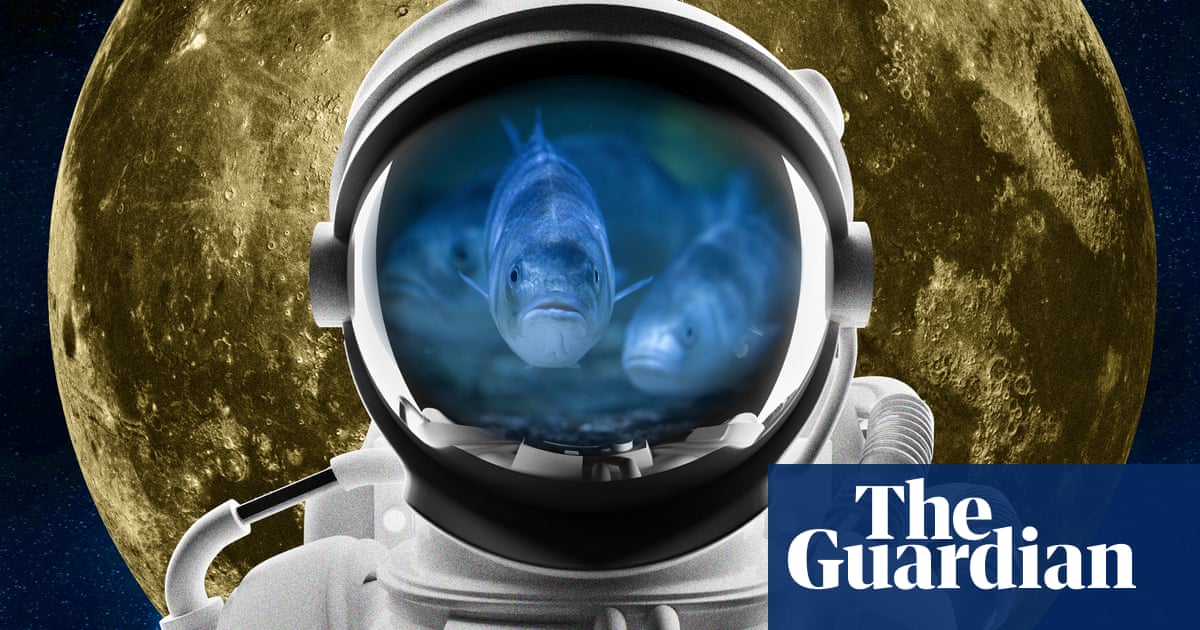At first glance, there doesn’t seem to be anything special about the sea bass circling around a tank in the small scientific facility on the outskirts of Palavas-les-Flots in southernFrance. But these fish are on a mission.
When fully grown, they will produce offspring that will be the first to be launched into space as part of a scientific project called Lunar Hatch that is exploring whether sea bass can be farmed on the moon – and eventually Mars – as food for future astronauts.
The project is the brainchild of Dr Cyrille Przybyla, a researcher in marine biology for the French National Institute for Ocean Research, who will be watching their progress like any anxious parent.
“Fish is an excellent source of protein because it is the animal organism that we digest the best and it has omega 3 and important B vitamins that will be needed for astronauts in space to maintain muscle mass,” Przybyla says. “The question was: how can we produce food that far away?”
The answer is, he says, to blast the eggs into space where they will hatch in the time it takes to get to the InternationalSpaceStation (ISS). Initially, the fish will simply be observed before being frozen and returned to Earth but eventually the idea is that they will be farmed on the moon.
Przybyla is confident that should the world’s space agencies decide to build a moon base, Lunar Hatch will be able to put sea bass on the menu at least twice a week.
Sending fish into space is not new. The first “aquastronauts” to make the journey were tiny fish known as mummichogs (Fundulusheteroclitus) sent into orbit on one of the Apollo missions in 1973. Until then, these small, unremarkable creatures had rarely ventured far from brackish creeks and coastal waters or salt marshes.
Three years later, two Soyuz astronauts carried out a series of experiments withan aquarium of guppiesin the Salyut Soviet space laboratory.
In 2015,zebrafish were sent to the ISSto investigate how muscles atrophy in microgravity, while in April last year the Chinese sent several zebrafish to its Tiangong space station. Other missions have transported oyster toadfish, swordtails, medakas, guppies and goldfish.
But this is the first time they could actually be farmed and used as a regular food source for astronauts.
Przybyla says Lunar Hatch’s ultimate aim is to create a “closed-loop food chain” on the moon, using a series of compartments. The first tanks will be filled with water from ice found at the bottom of craters at the moon’s poles. The wastewater produced by fish in these tanks will be used to produce micro-algae that can then be used to feed filtering organisms, including bivalves, or zooplankton would collect some of the waste.
The faeces from the sea bass in the first tank would, meanwhile, be treated by shrimps and worms that would in turn be food for the fish.
“The aim of Lunar Hatch is to have no waste,” Przybyla says. “Everything is recycled through an aquaculture system that would have to be autonomous for four to five months.”
The team has calculated that to provide two portions of fish each week for seven astronauts on a mission lasting 16 weeks, about 200 sea bass would be needed. As well as the 200 fertilised sea bass eggs sent into space, another 200 siblings produced by the fish at Palavas-les-Flots will be kept as a control group.
The path from slightly eccentric idea to the stage of development Przybyla’s project has reached today has taken almost a decade. In 2016, the European Space Agency asked the scientific community for ideas for their future lunar base called the Moon Village. They liked Przybyla’s proposal and, at the end of 2018, he received his first funding from the Centre national d’études spatiales (CNES) the French national space agency.
The initial step was to establish whether the fertilised fish eggs could withstand being shaken about during a space launch; the nearby University of Montpellier’s Space Centre agreed to simulate the propulsion of a Russian Soyuz rocket on its equipment used to test satellite prototypes.
“Soyuz makes the most vibrations at lift-off compared with other launchers. We used two species and embryos at two different stages and we saw the vibrations didn’t affect their development,” Przybyla says.
“Then we looked at what else could disturb the fish cells on their journey, including hypergravity induced by acceleration and cosmic radiation and whether they would continue to form or whether their DNA and development would be affected.”
So far the results obtained at Palavas-les-Flots are positive. Now, they need to be put into practice.
“We’ve done all the possible simulations we can do on the ground so the goal now is to have a space mission to verify that data and so we can examine the difference between a control group of fish siblings that remain on the Earth,” he says.
He and his juvenile sea bass must wait until CNES and Nasa’s Kennedy Space Center in Florida find him a place on a mission, to test his theories.
“Unfortunately, we can’t say when that will be but we hope it will be in the near future.”
Since announcing the Lunar Hatch programme, the Chinese have revealed they too are carrying out research into closed circuit aquaculture systems that could be used on their space station – so the race is on.
For those who are more concerned about life on Earth, Przybyla says the Lunar Hatch programme has an equally vital application here.
“What we have done is converted a system we have been working on for the Earth to the moon,” he says. “On Earth, this recycled circular loop aquaculture is important not only for preservation of the environment but also for economic durability. The same principle that applies for the moon could be used to feed isolated communities.”
